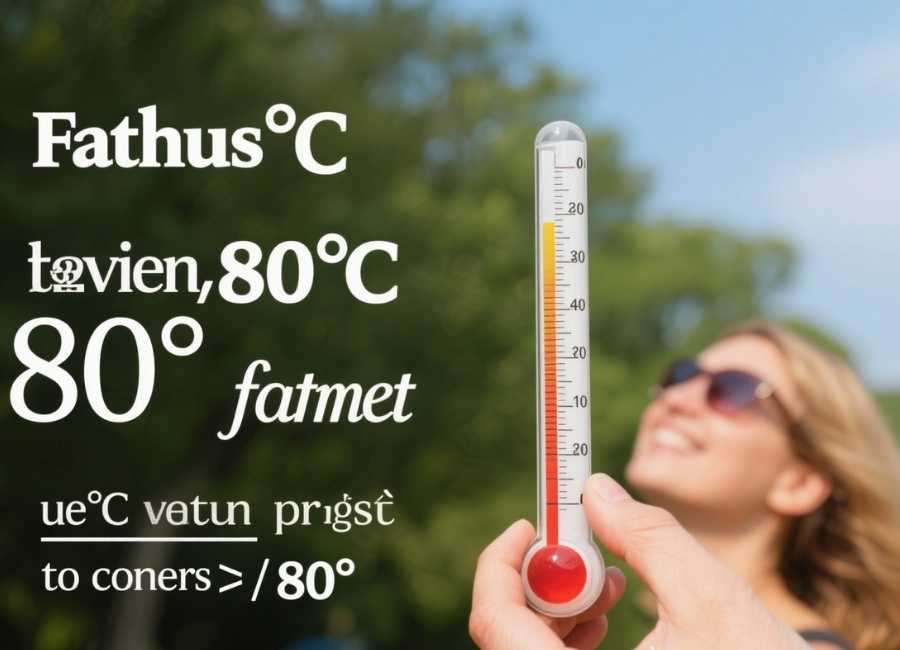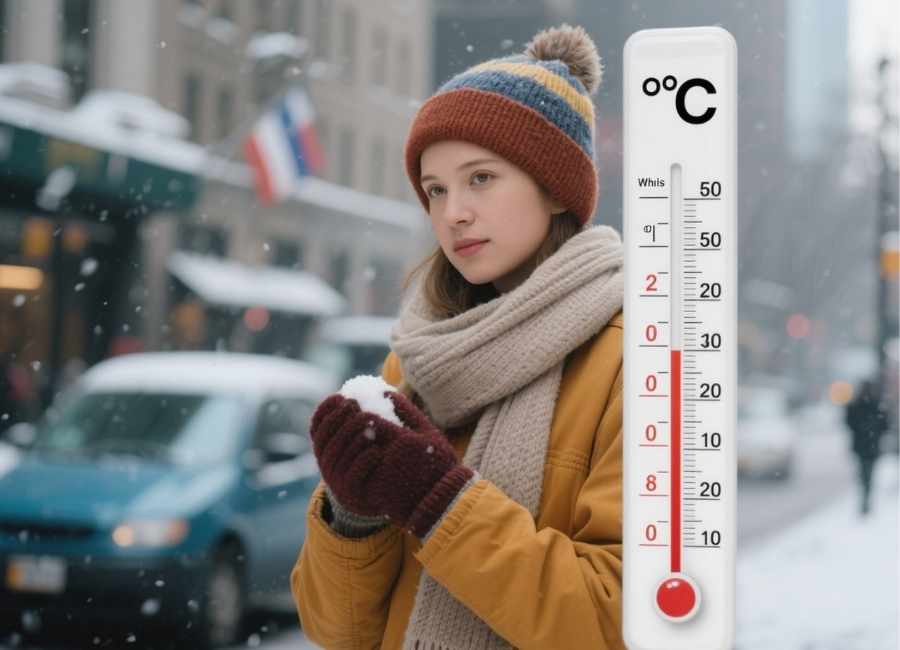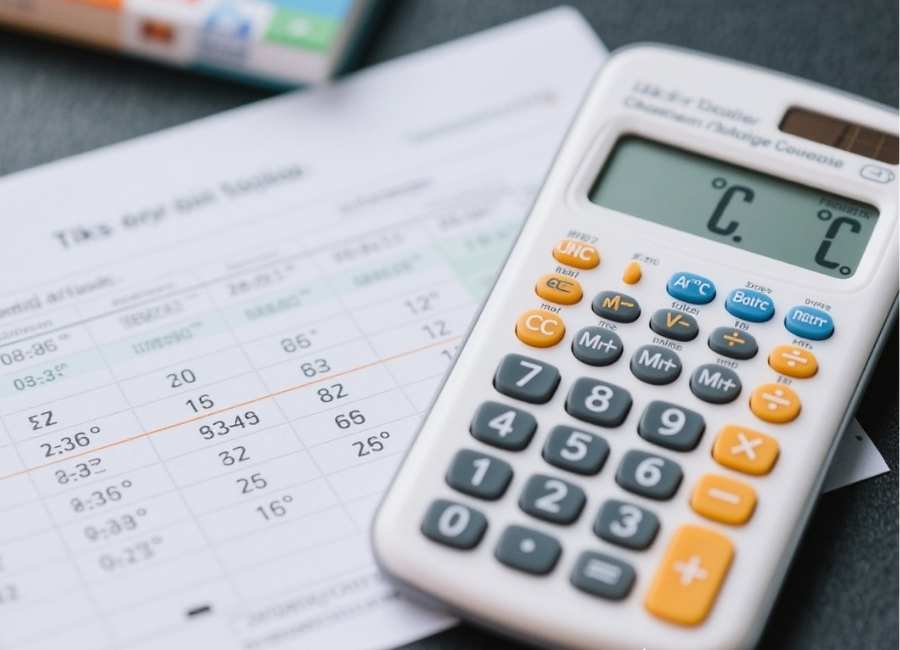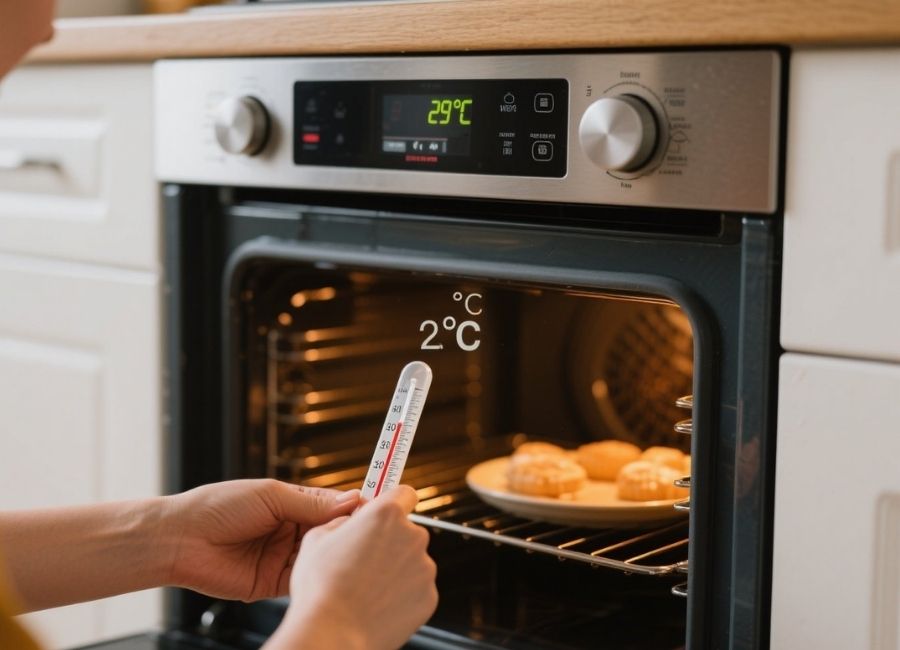Temperature conversions might seem daunting at first, but they are simpler than you think with the right formula and guidance. Understanding how to convert Fahrenheit to Celsius is not only useful for academic purposes but also essential for everyday scenarios like reading weather forecasts or adjusting your oven’s temperature settings when following recipes from other countries.
This guide will walk you through the process of converting 80 degrees Fahrenheit to Celsius, explain the formula, provide step-by-step instructions, and explore practical examples.
What Is the Fahrenheit to Celsius Conversion Formula?

Before we proceed to convert 80 degrees Fahrenheit, it’s important to understand the standard formula that links these two temperature scales:
Celsius (°C) = (Fahrenheit (°F) – 32) × 5/9
This formula reflects the relationship between the Fahrenheit and Celsius scales, establishing the mathematical way to convert one to the other.
Breaking Down the Formula:
- Subtract 32 from the Fahrenheit value.
- Multiply the result by 5.
- Divide the result by 9.
Following these steps ensures an accurate conversion every time.
Step-by-Step Instructions to Convert 80 Fahrenheit
Now that we have the formula, let’s put it to work by converting 80°F to Celsius.
- Start with the conversion formula:
- Celsius = (Fahrenheit – 32) × 5/9
- Substitute 80 for Fahrenheit in the formula:
- Celsius = (80 – 32) × 5/9
- Simplify the calculation:
- Subtract 32 from 80 = 48
- Multiply 48 by 5 = 240
- Divide 240 by 9 ≈ 26.67
Thus, 80°F is approximately 26.67°C.
Why Is Fahrenheit to Celsius Conversion Necessary?

Now that we know how to do the conversion, you might wonder why it’s important to master this skill. Temperature scales vary globally, and being able to convert temperatures seamlessly can help in a variety of contexts:
- Weather Preparedness
Imagine traveling from the U.S., where Fahrenheit is commonly used, to Europe, where Celsius dominates. Knowing how to convert helps you pack appropriately and avoid weather-related surprises.
- Cooking and Baking
Many international recipes use Celsius for oven settings. If you’re working with a recipe that calls for 180°C, conversion knowledge ensures your dish will turn out perfectly.
- Education and Science
Science classes and laboratory settings often favor Celsius for temperature measurements. Understanding these conversions can prevent mix-ups and ensure accurate results.
- Global Communication
Knowing both scales helps you communicate easily with friends, family, and colleagues across the world who might reference temperatures in a different unit.
Examples of Converting Common Temperatures
To solidify your understanding, here are a few more examples of temperature conversions using the steps outlined earlier:
- 50°F to Celsius
Celsius = (50 – 32) × 5/9 = 10°C
- 100°F to Celsius
Celsius = (100 – 32) × 5/9 = 37.78°C
- 32°F to Celsius
Celsius = (32 – 32) × 5/9 = 0°C (freezing point of water)
- 212°F to Celsius
Celsius = (212 – 32) × 5/9 = 100°C (boiling point of water)
Repeating these calculations helps reinforce the process and makes it second nature.
Tips for Accurate Temperature Conversions

- Use a Calculator for Precision: While the process can be done manually, using a calculator ensures accuracy, especially for values producing long decimal results.
- Familiarize Yourself with Common Benchmarks: Memorizing conversions for key temperatures, like freezing or boiling points, allows you to estimate other conversions more easily.
- Leverage Online Tools: Numerous online calculators and apps can handle conversions instantly, perfect for when you’re short on time.
- Understand Rounding Rules: When rounded to two decimal places, values like 26.6666 can be simplified to 26.67°C for practical purposes.
Interesting Facts About Fahrenheit and Celsius
- Fahrenheit Origin: The Fahrenheit scale was created by Daniel Gabriel Fahrenheit in 1724, originally based on the freezing point of a brine solution.
- Celsius Simplicity: Anders Celsius, a Swedish astronomer, established the Celsius scale in 1742, with 0°C as the freezing point and 100°C as the boiling point of water under standard conditions.
- Global Usage: Most countries use Celsius, but countries like the United States, the Bahamas, and Belize still primarily use Fahrenheit for day-to-day temperature measurement.
- Conversion Shortcut: For rough estimates, you can subtract 30 from the Fahrenheit value and divide by 2. (Note that this shortcut is not as precise as the standard formula.)
Unlock the World of Temperature Conversions
Being able to convert temperatures isn’t just a neat trick; it opens doors to a world of opportunities. Whether you’re adjusting recipes, planning international travel, or digging deeper into scientific research, knowing how to effortlessly switch between Fahrenheit and Celsius empowers you to engage with a broader world.
For 80°F, you now know the magic number is approximately 26.67°C. Next time you encounter a temperature in Fahrenheit, grab this guide and convert it with confidence.



















